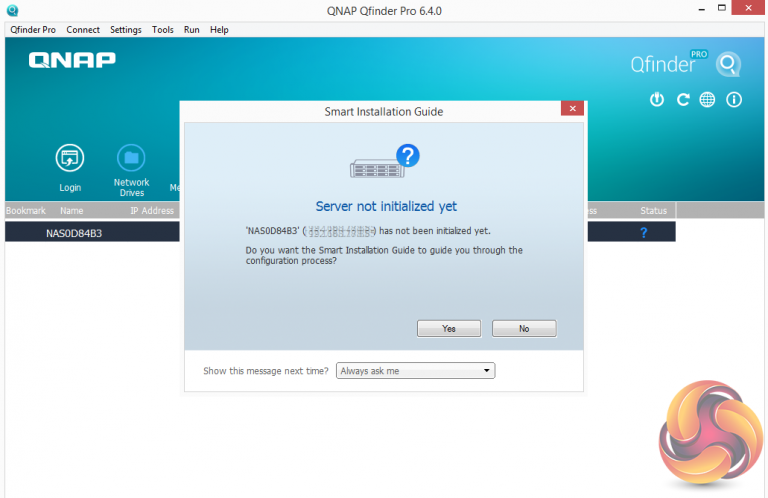

Enter the following commands: QNAPQfinderProWindows-w.x.y.z.exe /S TASKKILL /F /IM QfinderPro.exeĪfter a few moments you should see the Qfinder Pro Desktop Shortcut appear.Open an Elevated Command Prompt by Right-Clicking on Command Prompt and select Run as Administrator.Download & Copy the QNAPQfinderProWindows-w.x.y.z.exe to a folder created at (C:\Downloads).Under Qfinder Pro section, select Windows Download.
Qfinder download how to#
How to Install QNAP Qfinder Pro Silently QNAP Qfinder Pro Silent Install (EXE) This article will serve as an informative guide and give you a clear understanding of how to perform a silent installation of QNAP Qfinder Pro from the command line using the EXE installer. It is also important that you understand the security implications of depending on resources that might be modified by a user account.QNAP Qfinder Pro allows you to quickly find and easily access all of the QNAP NAS on the same LAN. You will probably also want to check the ACL of other files and directories you have placed under programdata, and make sure the settings are appropriate based on what you are doing with them.

Qfinder download code#
Most installation technologies provide a simple way to customize the ACLs of files and directories if yours does not, you can still write some custom code to handle the issue.Ī code sample on MSDN, which is probably not correct for your scenario but is a good place to start, if your installation technology does not have tools to help you set an ACL:

Qfinder download full#
By default, things placed under ProgramData only grants full permissions to the user who put it there you most likely will want to grant more permissions to a group of users (The "Users" group, possibly) during the installation of your application if multiple users will need write permissions to the file. Given the location, I am assuming your application is installed for all-users. You can check the ACL on the file by opening up a command prompt and running "icacls C:\ProgramData\%OurPlugin%\%Plugin.XML%". It sounds like what's occuring here is an ACL issue, assuming you are seeing ACCESS_DENIED. If an application that is going to prompt for elevation is in your startup items when the user logs in, it will not be launched, possibly because it is extremely disruptive, especially if the user is running as a standard user in an enterprise or something, and may be required to go find another person to go enter a password, since the user may not know the admin password. The proper setting for you sounds like 'asInvoker' if you want to run it at login. OK, so, it sounds like you have a program that starts when the user logs in, perhaps? If so, you have done the right thing lowering the runlevel in the application manifest. If I install the program with highest available permissions it no longer has Windows Defender popping up but It then crashes pointing to the C:\ProgramData Directory with a permissions problem.Īny help or even poiting to somewhat the right direction is appreciated. Running the program with elevated permisions in the manifest allows the program to run as long as you either turn UAC off or if you are an administrator and allow the blocked startup program. It points to the C:\ProgramData\%OurPlugin%\%Plugin.XML% file and then it crashes.Įdit: I did some further testing on this and I have determined that it is UAC that keeps on blocking the program. But by doing this the UAC complains saying thier is inusffecient priveleges to run. This then allowed it to bypass the Windows Defender and Defender would not want to block it any more. So we set the manifest to lower priveleges. What this did is that when we turned Defender Defender would get the dreaded pop up on start up with a the compability message or similar and defender blocks it. Intially we had it set to run to "requiresAdministrator" access level defined in the application manifest. It runs great with Defender Off and UAC control Off. We have a plugin that we got signed and installs fine.


 0 kommentar(er)
0 kommentar(er)
